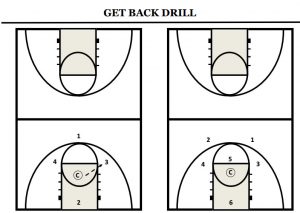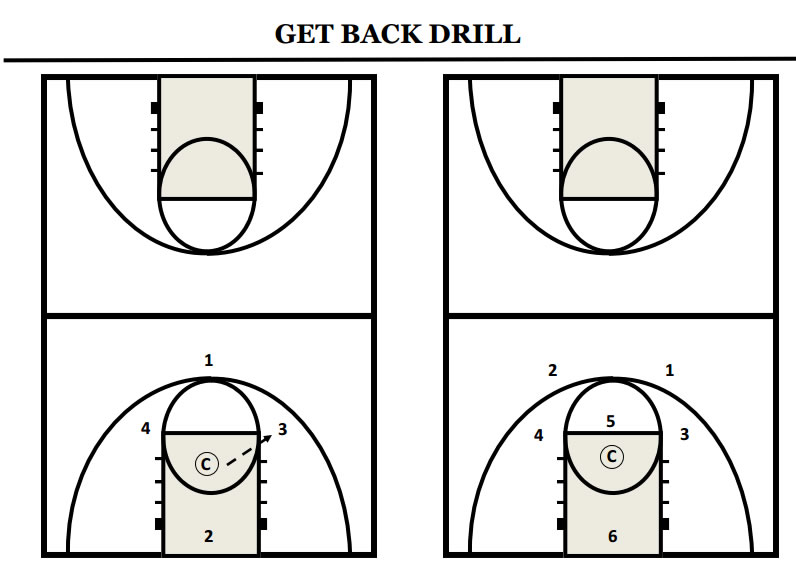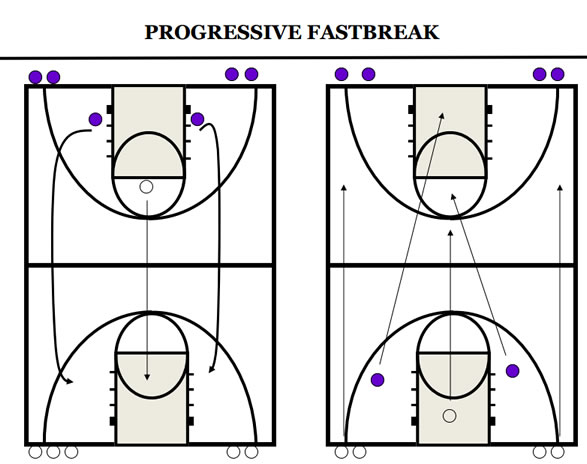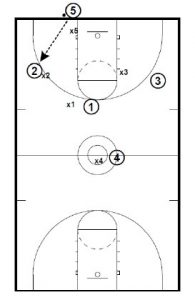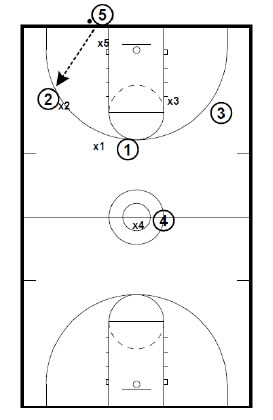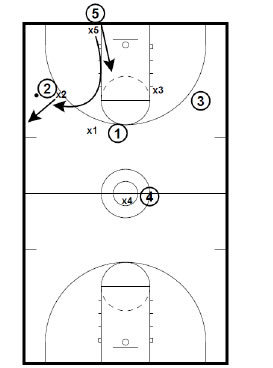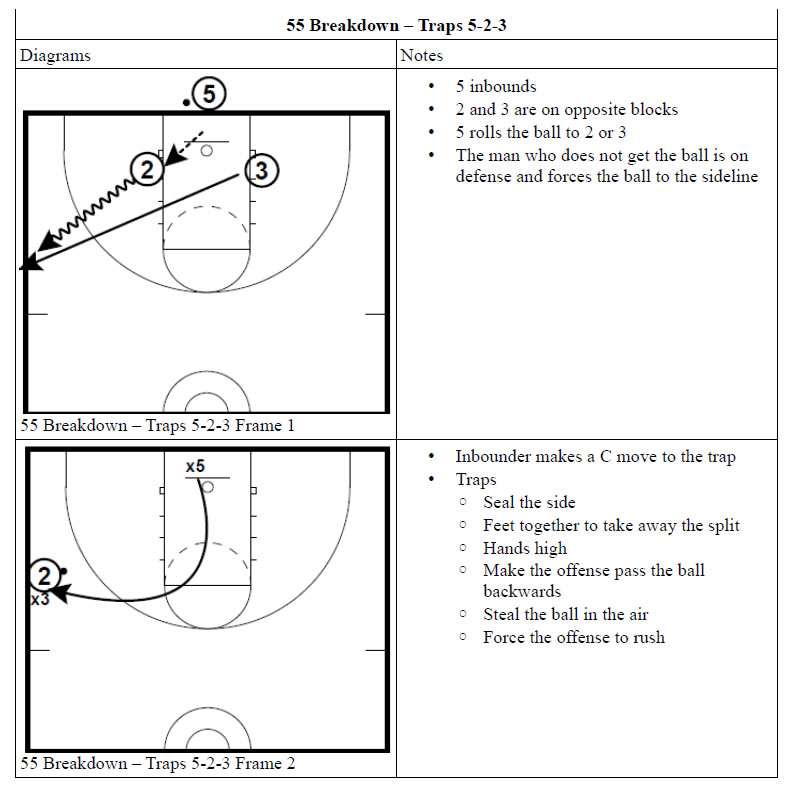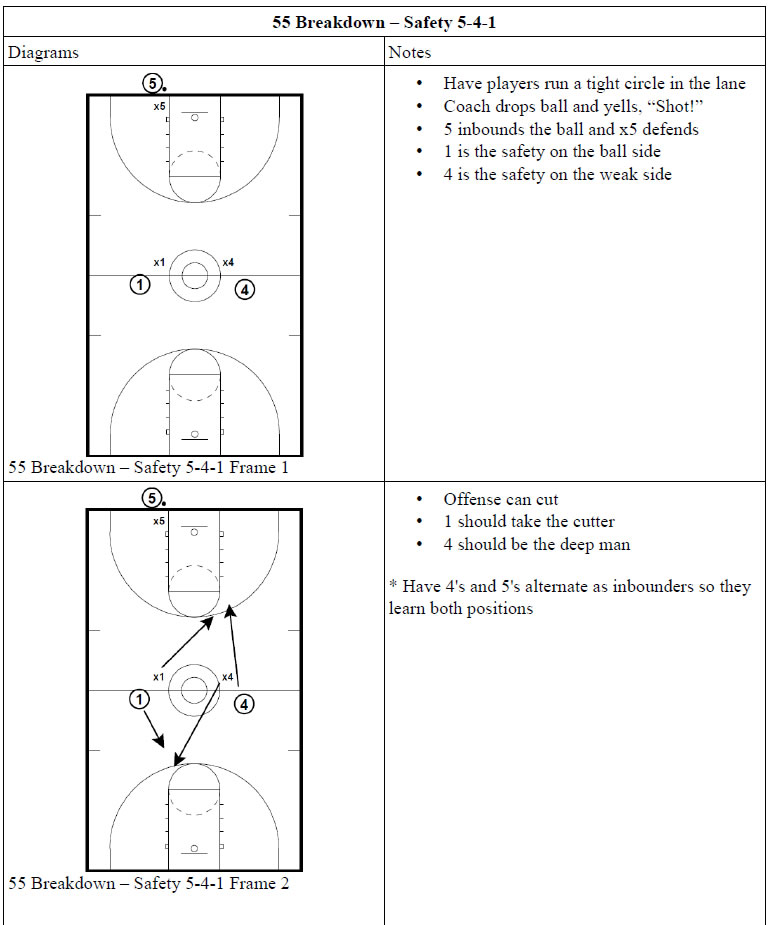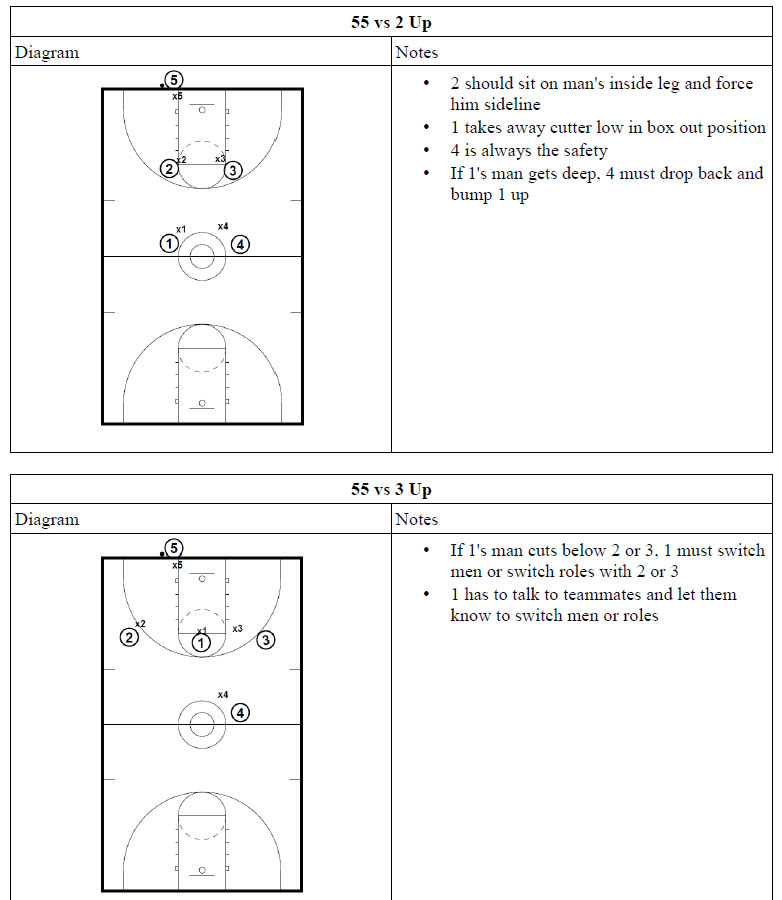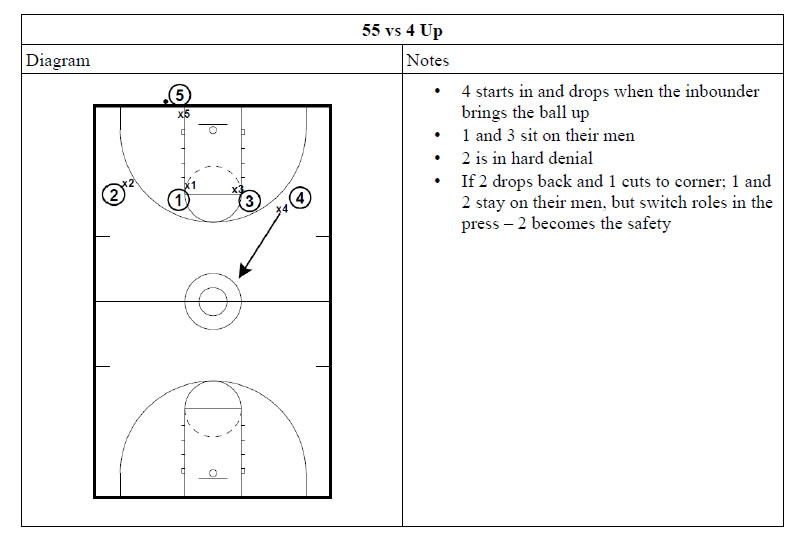After I sent out the video clip of an introduction to defending the side pick and roll on Friday, (Here is the 4 minute sample video link if you missed it. There is nothing to buy to see the video:
NBA defending side pick and roll
I was pleasantly surprised by one of the responses I received. It was from Del Harris, former head coach of the Lakers, Rockets, and Bucks.
He had more to add to what the video introduced and he gave me permission to post what he had written.
The remainder of this post are in Coach Harris’ words.
I think George Karl is one of the 3 great coaches in the NBA game today and thought his asst did a nice job for a 4 minute presentation. I just felt compelled to add what he did not have time to add in the event some younger coaches thought that this may be all there is to it.
This (the video link above) is a good intro into turning the wing pick and roll down and certainly no one can cover all the contingencies in 3-4 minutes. One of the basics that should be noted, though, is that the execution by the defender on the picker must be emphasized. It is not satisfactory for the defender to lay back well off of the ball action. He needs to be no more than a step and an arm length from the picker and in an excellent defensive stance. He cannot be in a standup position. He has to be able to get down and move his feet. If the ballhandler is still able to get the split or to execute the short bounce to the picker on the short roll, (often now called the pocket pass), the defender on the picker must close up to whatever it takes to prevent the split or the easy catch and shoot/drive by the picker after a pocket pass.
There are at least three things that the team defense must be ready for which emphasizes the point we make that “it takes 5 men to defend a well executed ball screen (pick/roll or pick/pop).” Of course, one is that the ball handler can pull up and shoot, so the ball defender should be close enough to challenge that shot, but if not, the picker defender must do that. Along that line the most common mistake the ball defender makes in this coverage is to get to an extreme position in turning the ball down. A good defender can make the ball go sideline by getting no more than square to the sideline as he moves up into the ball handler when he hears his teammate yell that they are turning the ball down (regardless of what they name that coverage). The coach makes a good point about the mistake of always looking back to see the picker. Even worse most players want to get next to the picker and actually screen themselves instead of moving up into the ball handler.
If the ballhandler beats both men and tries to get to the rim, the weak side low defender must attack the layup. But the most common results are the pass to the roll man and the short pocket pass to the picker in the general elbow area (15-20 feet from goal).
On the roll, the picker defender who is in a good defensive stance will try to play 2 men as long as he can (the ball and the roller). Hopefully, the ball defender will be able to catch up and get between the ball and the goal and then each thus gets back to his own man, but that does not always happen. If the picker defender sees that the ball defender will not recover, he will communicate that he has the ball and the ball defender will make a late switch to get between the roller and the ball, if possible. In any event the weak side low man must get to the roller and take him, and yell for the original ball defender to go to “p[ass off the small defender”—meaning he is taking the roller and the man must go weakside and find a man to put his body on.
Of course, one can utilize options other than the “late switch” noted here. One can rule that theball defender will continue on with the ball and trap the ball with the picker defender. The weak side low man must take the roller and, of course, the other two defenders rotate to cover the weak side low and/or outside shot areas, depending on where the fourth/fifth men might be located.
If the short pass is made to the pop man on the pick and pop move on this, it is little problem if the pop man is not a good shooter.
The defender on him can just help with the ball man and recover back to his own man, though the weak side top man at the nail should at least stunt a little at the non-shooter, but not so much as to leave his own man who is probably a better shooter.
Assuming a player will not pop unless he is an adequate shooter, then the weak side top man must rotate to the popper and the rest of the defense rotates up a man as well, with the original defender on the picker/pop man going weak side low to pick up.
Much communication is required as is the constant case in all defensive maneuvers. Regardless, of how much time a team spends on this, or any other technique for defending ball screens, a team must have a plan B, and usually a plan C as well, when playing a pick and roll team. Some teams are so adept at the pick and roll game that they run as many as two or three in a possession and 50 to 80 in a game in the NBA. In fact the pick and roll is now being over-used in my opinion and the colleges are falling right into that trap. Too much pick and roll stifles ball movement and the penetration game. By that, I mean that if a man is always running at the ballhandler and bringing another defender to the ball, there are limited options for the ball handler to see the gap for penetration to get to the basket or to get inside the defense to create inside shots or kickouts for his teammates.
In the end the best defense against the ball screens is to switch the switchable ones. If you cannot do that, you can choose for various alternatives relative to the talent of the opponents in the action and that of the defenders in it. You will want to have a trap option normally. You may want to have a more aggressive option for your athletic picker defenders and a more containing one for the slower big players.
The easy way out is to have only one way or two ways. That way you do not have to teach and coach as much and can blame it on the players for just not getting the job done. Or you can take it on yourself as coach to be able to make the proper adjustments in your game plans or during a game at at time out to throw a wrench into the action that is beating you at the time.
Multiple defense does not mean that you have to have three separate styles of man to man and 4 different zone defenses. Not at all. Being multiple means that you can prepare your team to make adjustments to defend whatever actions are beating you at the moment. You don’t ever have to use a zone or you can use a zone 100% of the time and still have a multiple defense system. Many have misunderstood the meaning of being multiple.
Del Harris, GM Texas Legends
Author, On Point -four steps to better life teams
I told Coach Harris that I as a thank you for his giving me permission to post his thoughts, I would help to spread the
word about his book “On Point.”
You can read a free sample by clicking here: On Point Sample
This is what Coach Harris had to say about the book:
“Every coach should have his point guard read my book. It came as a result of my speaking at the Nancy Lieberman
Award in Detroit in 2010. I wanted to say something that would make sense to the hundreds who would be there who were not the women’s NCAA D-1 best point guard in America, getting the award named for Hall of Fame PG and all time greatest woman player. I came up with the idea of noting the qualities in terms of abilities and attitudes that made for great point guard play. Then I showed how we all could mine those elements from within ourselves on the various Life-teams of which we are and would become a part.
The book will not only be good for the PGs to read but will absolutely make the coach a better coach. I wish I had known all that I have written when I was in my 20s , 30s or 40s. I am totally confident that what I have written is truth and it is backed up totally by biblical principles.”
Best regards and blessings to all, Del
For another sample and if you are interested in purchasing the book, you can click this link to see it on Amazon:
On Point: Four Steps To Better Life Teams

